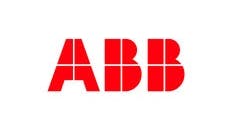Credit: DOE
As demand for microgrids grows, so does the need for microgrid-enabling technologies — the various systems and components that let the microgrid generate power and store it, supply customers, and connect and disconnect from the grid.
These technologies include diesel generators, natural gas generators, fuel cells, solar PV, distributed wind, smart inverters, and energy storage.
World-wide investment in microgrid-enabling technologies may reach $155 billion within less than ten years, according to a recent report by Navigant Research.
“Dramatic change is occurring in the microgrid market, as the economic value that these systems bring to the overall power grid becomes more and more apparent,” said Peter Asmus, principal research analyst with Navigant Research. “We expect the technologies that enable these systems to play key roles in the expansion of the microgrid sector to encompass additional technologies and services related to smart buildings, demand response, distribution and substation automation, and smart meters.”
Navigant describes microgrids as “a growing phenomenon in the global energy sector” and sees a greater emphasis being placed on the economic value microgrids bring to the entire utility-led central grid.
Perhaps the most noteworthy change happening in the microgrid sector, according to the report, is the investigation of new business models designed to support full commercial implementation of microgrid systems. Key to this development will be the companies that offer some level of microgrid optimization via smart grid or smart inverter or power electronics.
Navigant sees energy storage as the single largest investment category among microgrid-enabling technologies by 2023. Energy storage, however, remains a less significant market, then the various forms of distributed generation when they are combined. Navigant to see vendor revenue grow from $1.8 billion in 2014 to $9.6 billion in 2023 for solar, diesel, wind and other forms of DG used in microgrids.
Significant players profiled by Navigant
Large Master Controller and System Integrators: ABB, GE Digital Energy, Lockheed Martin, Schneider Electric, Siemens
DG Innovators: Bloom Energy, Cummins, Northern Power Systems, SunEdison, Tecogen
Smart Islanding Inverters: Princeton Power Systems, SMA Solar Technology
Energy Storage: ViZn Energy Systems, Win Inertia, Younicos
Smart Buildings: Honeywell, Johnson Controls
Smart Switches: S&C Electric Company
Smaller Microgrid Controls Specialists: Encorp, ETAP, Green Energy Corp., IPERC
PEV Charging and Energy Storage Innovators: Boulder Electric Vehicle, Ford, Nissan
A report summary is available here.
Join your industry peers to discuss microgrids on the LinkedIn group, Microgrid Knowledge.









